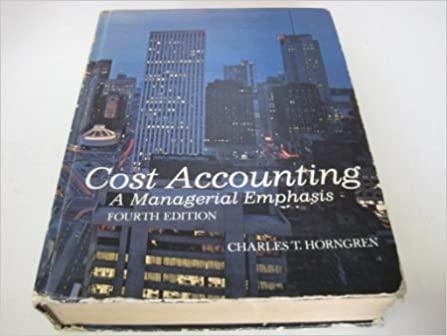Net Realizable Value of Joint Products (CPA) Miller Manufacturing Company buys zeon for $.80 a gallon. At
Question:
Net Realizable Value of Joint Products (CPA) Miller Manufacturing Company buys zeon for $.80 a gallon. At the end of processing in Department 1, zeon splits off into products A, B, and C. Product A is sold at the split-off point, with no further processing. Products B and C require further processing before they can be sold; product B is processed in Department 2 and product C is processed in Department 3. Following is a summary of costs and other related data for the year ended June 30, 19_3.
DEPARTMENT 1 2 3 Cost of zeon $96,000 — —
Direct labor $14,000 $45,000 $65,000 Manufacturing overhead $10,000 $21,000 $49,000 PRODUCTS A B G Gallons sold 20,000 30,000 45,000 Gallons on hand at June 30, 19_3 10,000 - 15,000 Sales in dollars $30,000 $96,000 $141,750 There were no inventories on hand at July 1, 19-2, and there was no zeon on hand at June 30, 19_3. All gallons on hand at June 30, 19_3, were complete as to processing. There were no manufacturing-overhead variances. Miller uses the net realizable-value method of allocating joint costs.
1. For allocating joint costs; the net realizable value of product A for the year ended June 30, 193, would be
a. $30,000.
b. $45,000.
c. $21,000.
d. $6,000.
2. The joint costs for the year ended June 30, 19_3, to be allocated are
a. $300,000.
b. $95,000.
c. $120,000.
d. $96,000.
3. The cost of product B sold for the year ended June 30, 19_3, is
a. $90,000.
b. $66,000.
c. $88,857.
d. $96,000.
4. The value of the ending inventory for product A is
a. $24,000.
b. $12,000.
c. $8,000.
d. $13,333. lop1
Step by Step Answer:






